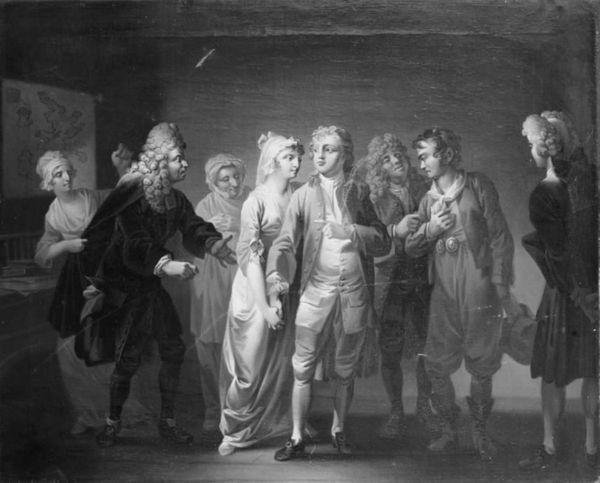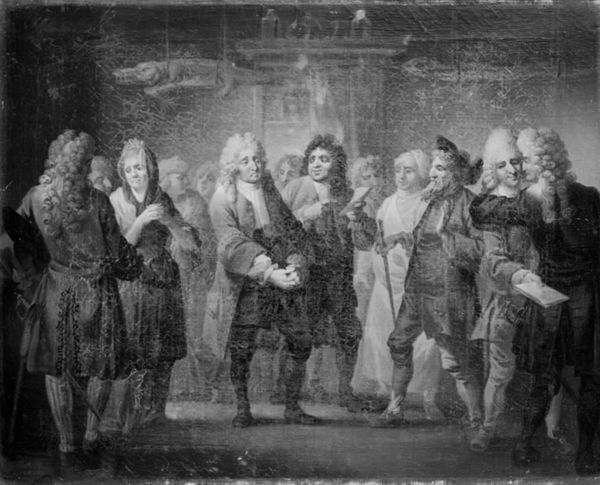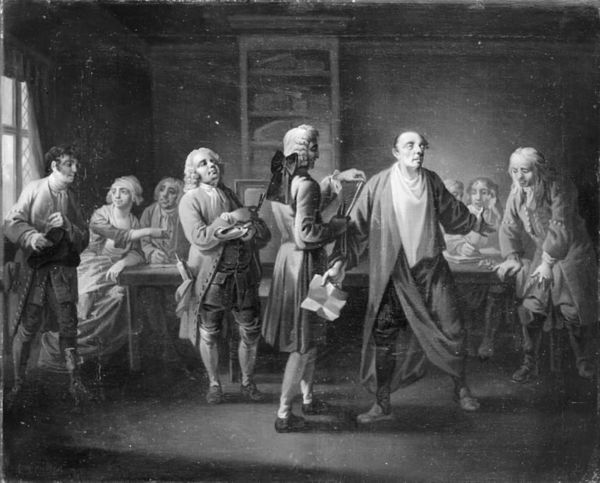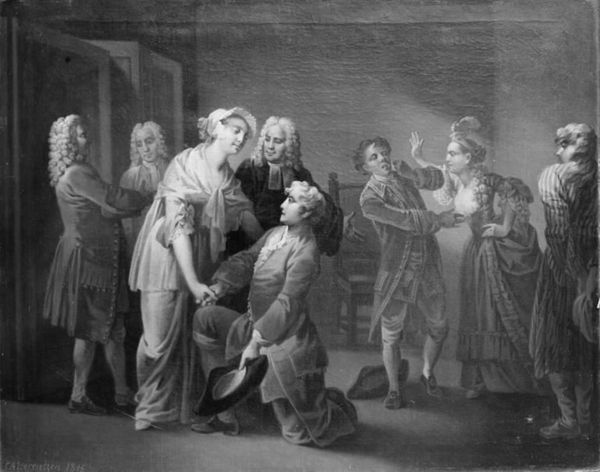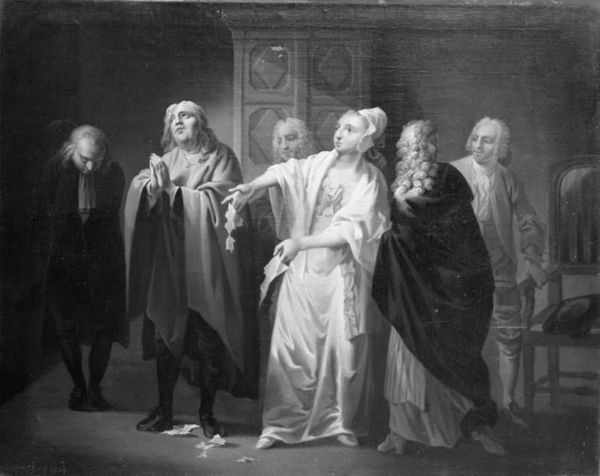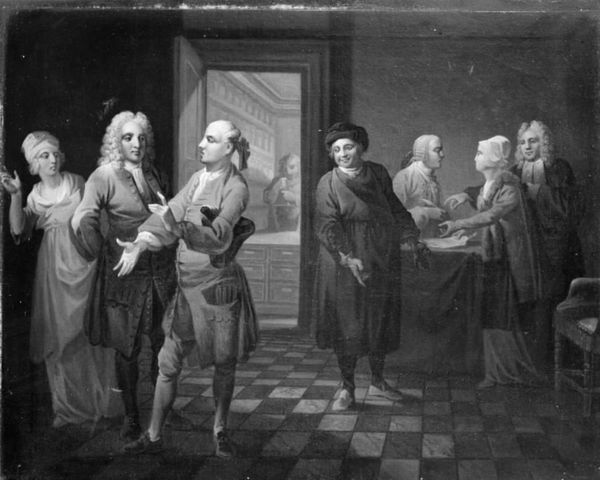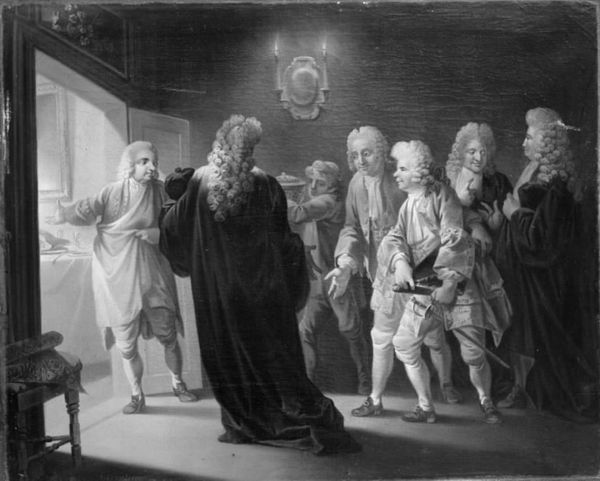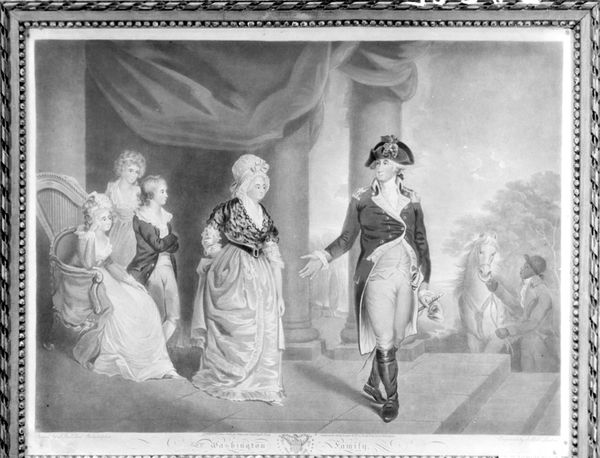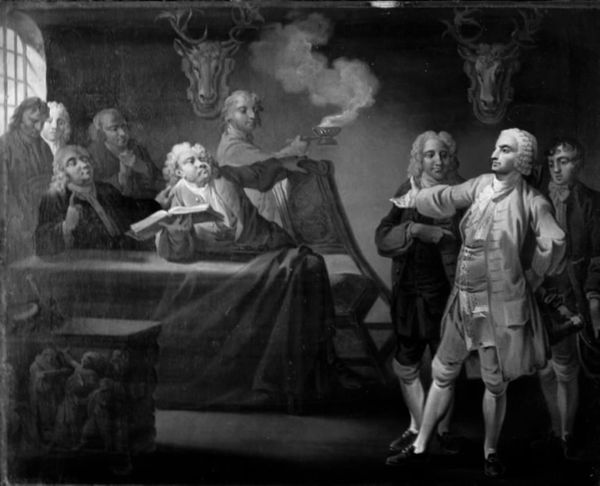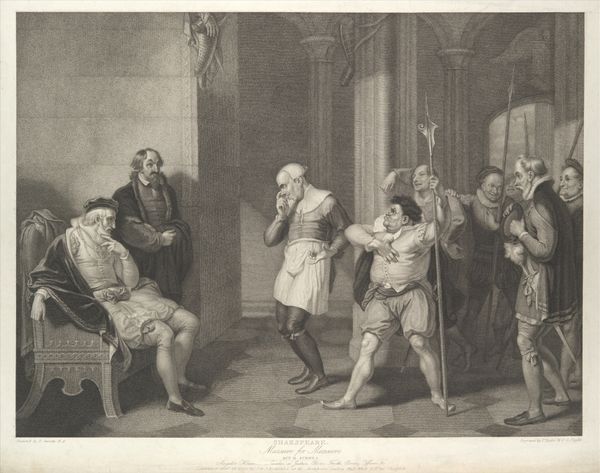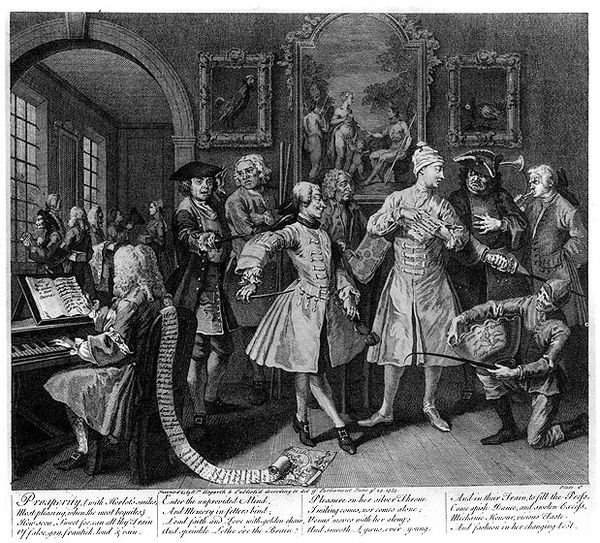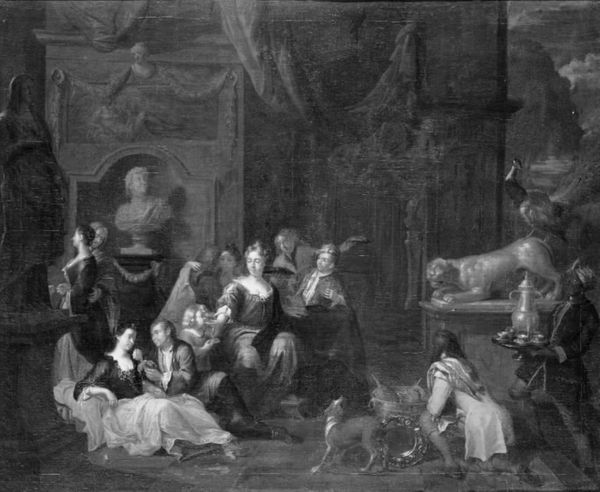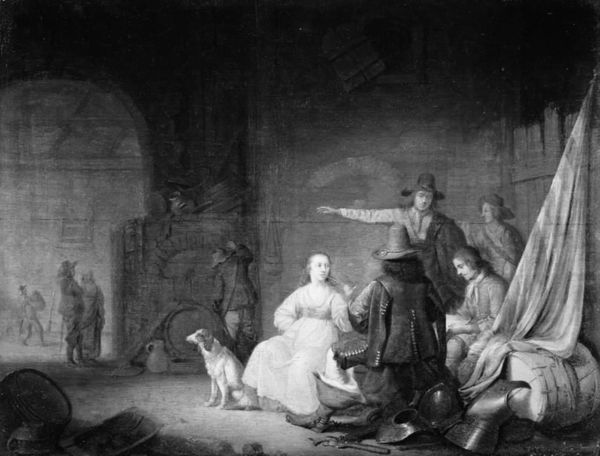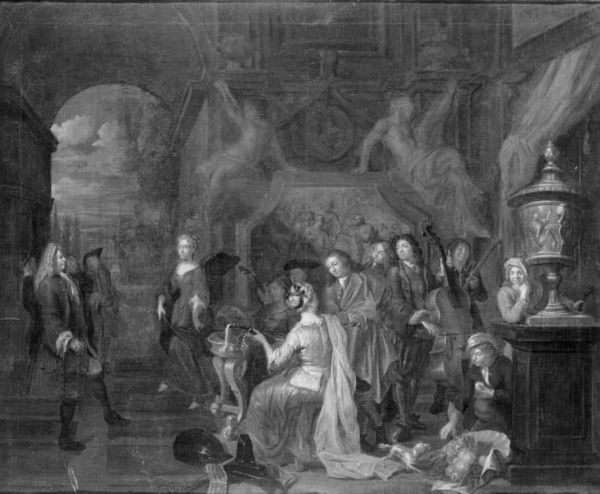
painting, oil-paint, canvas
#
portrait
#
portrait image
#
painting
#
oil-paint
#
figuration
#
canvas
#
romanticism
#
black and white
#
history-painting
#
monochrome
#
monochrome
Dimensions: 58.5 cm (height) x 72 cm (width) (Netto)
Curator: C.A. Lorentzen's "Den honette Ambition, III akt, 5. scene" from 1811 presents a staged, theatrical moment. What's your initial take? Editor: It’s somber, almost melodramatic. The stark monochrome palette amplifies the intensity, directing our attention to the gestures and expressions, which seem heightened, almost operatic. Curator: Lorentzen, working within the conventions of Romanticism, crafted this oil on canvas, as a reflection on historical and theatrical narratives. The painting is very interesting considering his commissions for the Danish court, painting many works of the royal family. Editor: True. Beyond the figures themselves, notice the carefully constructed composition. The central figure, commanding the space, seems to be rejecting a kneeling figure, orchestrating the emotional dynamics within the scene through the interplay of gazes and poses. The use of chiaroscuro pulls this sense forward even more. Curator: Absolutely. The choice of monochrome, so rare during this period, speaks to the constraints the artist faced in terms of readily available resources as well as labor—did the political events in Europe also place pressures on access to pigments or funding? Also consider his integration into the Royal Danish Academy of Fine Arts in 1792 as further support to my argument. Editor: That reading of scarcity versus abundance offers a fresh insight, however I'd counter it by highlighting the formal benefits of working monochromatically. By restricting his palette, he has amplified our attention to the underlying structure – to form itself! Notice the dynamic movement from the shadowed figure on the right through to the light reflected on the kneeling woman on the left. Curator: Yes, but to go back to the materials, the canvas itself serves as a material document of art production in that era, shaped by economic forces and the available skill sets within Lorentzen's workshop and circle. Editor: That is important. Yet I can’t shake the feeling of classical dramas enacted in monochrome – an interesting exercise of paring down drama and focusing on the fundamentals. Curator: Perhaps that intersection of materiality and artifice offers a compelling view of this piece, connecting the process of art making to its historical and theatrical underpinnings. Editor: I agree! I leave feeling that I have taken away much more from my looking. It really is wonderful.
Comments
No comments
Be the first to comment and join the conversation on the ultimate creative platform.
